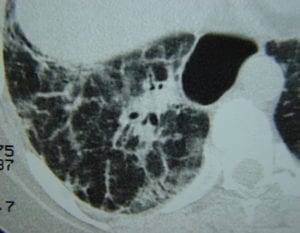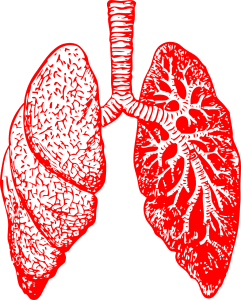Scleroderma
What is scleroderma?
Scleroderma is a group of rare diseases that involve the hardening and tightening of the skin and connective tissues — the fibers that provide the framework and support for your body. In some people, scleroderma affects only the skin while in others blood vessels, internal organs, and the digestive tract are affected. There are two major classifications of scleroderma:- Localized Scleroderma: affected areas found only in a few places on the skin or muscles, and rarely spread elsewhere. Generally, localized scleroderma is relatively mild.
- Systemic scleroderma: affected areas found in connective tissue in many parts of the body. Systemic scleroderma can involve the skin, esophagus, gastrointestinal tract (stomach and bowels), lungs, kidneys, heart and other internal organs. It can also affect blood vessels, muscles and joints. The tissues of involved organs become hard and fibrous, causing them to function less efficiently.
What are the symptoms of scleroderma?
Nearly everyone who has scleroderma experiences a hardening and tightening of patches of skin. These patches may be shaped like ovals or straight lines, or cover wide areas of the trunk and limbs. The number, location and size of the patches vary by type of scleroderma. Skin can appear shiny because it’s so tight, and movement of the affected area may be restricted. In addition to skin, symptoms of scleroderma can present themselves in the following body parts/organs:- Fingers or toes: One of the earliest signs of scleroderma is an exaggerated response to cold temperatures or emotional distress, which can cause numbness, pain or color changes in the fingers or toes. Called Raynaud’s disease, this condition also occurs in people who don’t have scleroderma.
- Digestive system: In addition to acid reflux, which can damage the section of esophagus nearest the stomach, some people with scleroderma may also have problems absorbing nutrients if their intestinal muscles aren’t moving food properly through the intestines.
- Heart, lungs or kidneys: Scleroderma can affect the function of the heart, lungs or kidneys to varying degrees. These problems, if left untreated, can become life-threatening.
What causes scleroderma?
The exact cause of scleroderma is currently unknown. While scleroderma results from excess collagen in body tissues, doctors aren’t certain what cause this abnormal collagen production. Collagen is a fibrous type of protein that makes up the body’s connective tissues, including the skin.How is scleroderma diagnosed?
Scleroderma can be difficult to diagnose. After a physical, a doctor may conduct the following tests:- Blood test
- Skin biopsy
- Breathing tests (such as pulmonary function tests)
- CT scan of the lungs
- Echocardiogram of the heart.
What are the available treatments for scleroderma?
Currently, there is no cure nor specific treatment for scleroderma, but there are treatments available to help manage symptoms, including proton pump inhibitors or medicine to improve the motion of the bowel. Some treatments are directed at decreasing the activity of the immune system.Where can I find out more about scleroderma?
Scleroderma Articles

CABA-201 for Systemic Sclerosis Earns Orphan Drug Designation
Jessica Lynn
March 26, 2024
Read More »

Higher PLR and PHR Linked to Worse Systemic Sclerosis Activity
Jessica Lynn
March 14, 2023
Read More »

Study of the Week: Topical CBD May Have Benefits for People Living with Scleroderma
James Moore
March 13, 2023
Read More »

Belimumab Granted Orphan Drug Designation for Systemic Sclerosis
Jessica Lynn
February 14, 2023
Read More »

Systemic Scleroderma Patient Pursues Ambitions as an Artist
James Moore
February 6, 2023
Read More »


Efzofitimod for Systemic Sclerosis Earns Orphan Drug Designation
Jessica Lynn
April 22, 2022
Read More »

Study of the Week: Black Scleroderma Patients are at a Greater Risk of Renal Crisis
James Moore
December 20, 2021
Read More »






